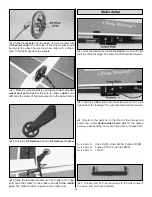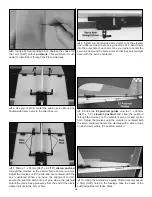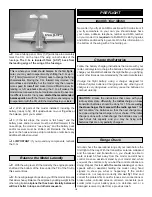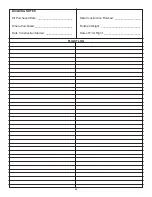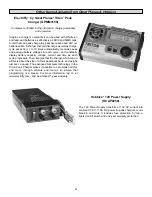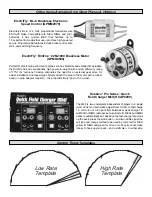
The FlatOut Extra 300S ARF is a great-flying model that flies
smoothly and predictably. The FlatOut Extra 300S ARF does
not, however, possess the self-recovery characteristics of a
primary R/C trainer and should be flown only by experienced
R/C pilots.
For the first flight, it is a good idea to have an assistant launch
the airplane for you. This allows you to keep your hands on the
controls and correct any trim problems that are present.
Have your friend hold the FlatOut Extra 300S ARF by the
canopy. Throttle up to full power, and have your friend give
the plane a gentle underhanded toss at about a 30° angle
upward. Since the Extra 300S ARF has a very high thrust-to-
weight ratio, the plane will accelerate to flying speed almost
instantly. Climb to a comfortable height and throttle back to
a lower power setting. This plane flies great at about half-
throttle when in standard forward flight.
Once you have the model trimmed out, the FlatOut Extra 300S
ARF is very capable of ROG (rise-off-ground) takeoffs from a
smooth surface (parking lot, runway, gym floor, etc.). To take off,
start by advancing the throttle to about two-thirds, making sure
to correct any torque reactions with rudder. The plane will build
flying speed almost instantly due to its high thrust-to-weight ratio.
Once the tail comes up, gently apply up elevator to break ground
and climb out. Full throttle takeoffs are necessary only for
extremely short runways.
When flying a 3-D aerobat like the Extra 300S ARF, there are
several things you should always keep in mind. First is
throttle management–this airplane has enough power to
climb straight up at full throttle, so level flight is more
comfortably achieved at about half-throttle. Avoid extremely
high-speed flight with the FlatOut Extra 300S ARF – it is
designed for slow 3-D aerobatics, and extended full-throttle
dives can result in wing flutter. While flutter won’t destroy the
airplane, it’s best to avoid it. Second, take it easy on the
control sticks–with 3-D throws, even a small stick deflection
can result in a big response, so be gentle (unless of course
you’re performing an aggressive maneuver).
Because this model is extremely lightweight, it does not
retain energy well, and performing classic gliding landings
can be difficult. Instead, land the model under power, with a
rolling 3-point landing as the goal. To achieve this, perform
your landing approach with the model in the 3-point attitude
(nose up at such an angle that all three wheels are level).
Modulate your descent with the throttle, and use a quick
“blip” of power just before touchdown to slow the descent for
a gentle landing.
Have a ball!
But always stay in control and fly in a safe manner.
GOOD LUCK AND GREAT FLYING!
Landing
Flight
Rise-Off-Ground (ROG) Takeoffs
Hand Launch
FLYING
21







